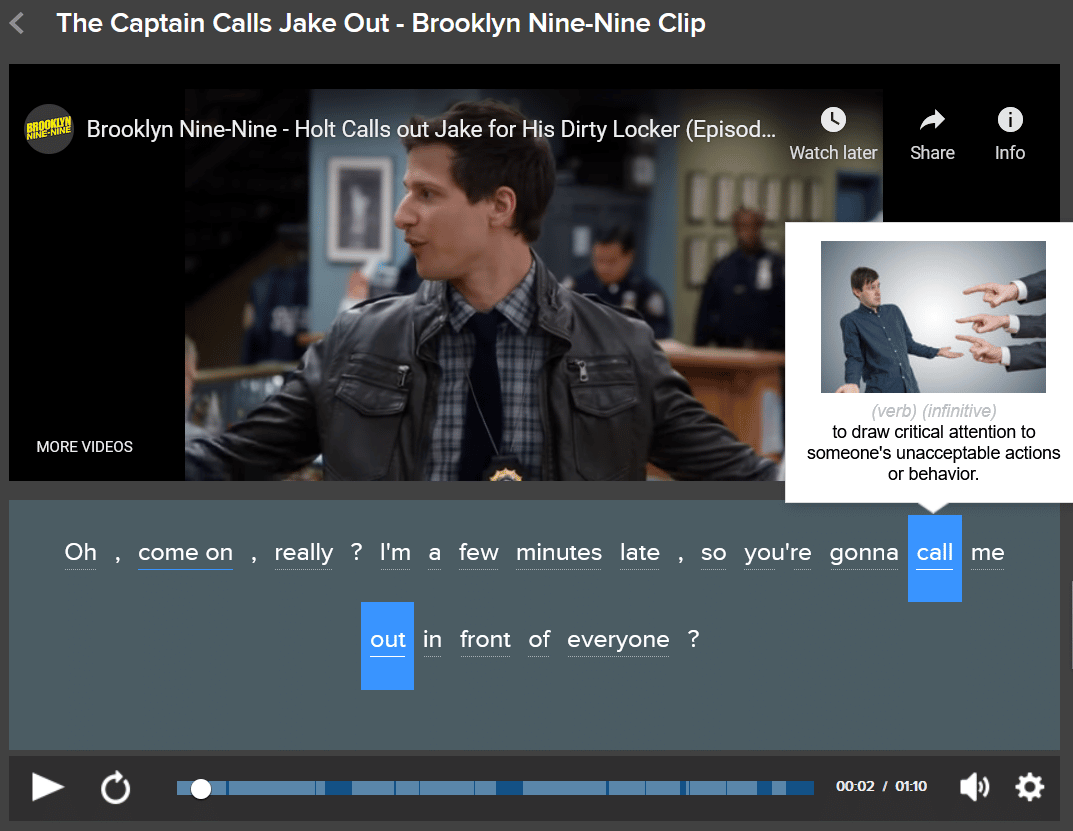Contents
- 1. Read a Short Story
- 2. Share a Passion
- 3. Start a Chat Group
- 4. Listen to a Podcast
- 5. Write a Letter
- 6. Write an Amazon Review
- 7. Do a Wikipedia Edit
- 8. Write a Short Story or Poem
- 9. Share Their Culture
- 10. Catch a Movie
- 11. Meet New People
- 12. Analyze a Song
- 13. Go on a Photo Scavenger Hunt
- What Makes Homework Effective?
13 ESL Homework Ideas

Homework may not be many students’ favorite thing, but research says it’s truly an effective learning tool that teachers should use.
The trick is assigning great homework.
To help you do this with ease, we’ve compiled an awesome list of 13 homework assignments that will have your ESL students begging for more.
Download: This blog post is available as a convenient and portable PDF that you can take anywhere. Click here to get a copy. (Download)
1. Read a Short Story
Have students read a short story for homework and then ask them to tell the class about the story in the next session.
I would recommend giving students some suggestions on what short stories to read, depending on the level of your students.
Here are some suggestions of short story collections for each level of ESL learner:
Beginner
- “The Very First Americans” by Cara Ashrose: This collection of short stories features Native American culture and history, written in simple language.
- “Oxford Bookworms Library: Starter Level” This series offers simplified versions of classic stories, such as fairy tales, adventure stories and more.
- “Classic Tales for ESL Students” by L.A. Hill: This collection of classic stories from literature is retold with easier vocabulary and sentence structure.
Intermediate
- “The Best American Short Stories” This series features contemporary short stories from a wide range of American writers, so there’s something for everyone here.
- “Short Stories in English for Intermediate Learners” by Olly Richards: This collection of engaging stories is designed specifically for intermediate ESL students.
- “Roald Dahl: The Collected Short Stories” This delightful collection of quirky and imaginative tales has become a favorite of many of my students.
Advanced
- “Interpreter of Maladies” by Jhumpa Lahiri: This Pulitzer Prize-winning collection of short stories explores the immigrant experience, something which many ESL students can relate to.
- “Dubliners” by James Joyce: This classic collection of interconnected stories captures the essence of Dublin in 1914. But it still feels modern to many students.
- “Nine Stories” by J.D. Salinger: This classic collection of short stories is a class favorite when I’ve used it.
2. Share a Passion
What do your students really care about? Give them a chance to talk about it in front of the class.
Have each person choose something they’re passionate about, something they might consider themselves an expert on.
Challenge students to think of a creative way to present five must-know facts about that subject. They might make a movie, create a poster or brochure, write a song or even put on a skit.
Have each person present their creative project to the class, and then give the class five minutes to ask questions of the presenter.
Set certain parameters like students must speak in complete sentences or require that every student ask at least two questions at some point during the presentations.
Students will love sharing about their passions, and they’ll get some great speaking, listening and discourse information in the process, as well as teach the rest of the class some interesting vocabulary.
3. Start a Chat Group
Ask for class for a volunteer to start a class WhatsApp chat group. They can also decide to use another messaging app like Telegram, Viber, Voxer or any other app that has a group chat function.
Encourage them to send at least one message and to respond to a couple others for their homework.
This text group has the added advantage of students being able to make friends with one another, and a place to ask about missed homework assignments on days when they can’t make it to class.
Note that if a student doesn’t want to be included in the chat group, you should have a back up assignment prepared for them.
4. Listen to a Podcast
Listening is one of the ESL student’s most difficult skills to acquire, so listening to a short podcast episode is ideal homework.
You can ask students to write a little about the podcast to turn in to you, or you can ask them to briefly summarize what they heard for the class in the next session.
Here are some suggestions for well done podcasts:
The English We Speak: Produced by the BBC, this podcast focuses on teaching commonly used phrases and idioms in conversational English.
The Moth: A storytelling podcast where real people share their personal experiences and anecdotes in English.
Stuff You Should Know: Though not specifically designed for ESL students, this podcast covers a vast array of interesting topics, providing exposure to diverse vocabulary and subject matters.
5. Write a Letter
Ask your students to write a letter. The letter can be written to a friend or family member (which they could then actually mail or email), or it could be a fan letter to a favorite musician or actor. They could even write a letter to Santa Claus or a historical figure.
For example, a student might choose to write a letter to Marie Antoinette, asking her what it was like to be the queen of France at such a young age.
You can also choose to have students write letters to one another. Then the next homework can be writing that letter writer back.
6. Write an Amazon Review
Ask you students to review a product on Amazon (or any other shopping website that has reviews). Ask them to select a product they have really used, so they have a genuine opinion on the quality of the product and whether it lived up to their expectations.
Then, in the next session, show the reviews on the overhead projector to the class and ask a student to read the review.
You can then go over any errors in vocabulary, grammar or sentence structure and revise the review together as a class.
7. Do a Wikipedia Edit
Since anyone can edit a Wikipedia article, it’s a great place for ESL students to hone their writing and editing skills, and they’ll have a built-in readership, too!
Ask students to select a person that they know a lot about—a well-known figure from history, pop culture, music or film would all work. Then ask them to read the Wikipedia entry to see if they can add anything else to the article.
Perhaps the article on Ryan Gosling is missing a key detail about his recent Ken performance. If so, the student will revise and edit the article. They should take notes on what they changed, so they can explain it to you or the class the next day.
8. Write a Short Story or Poem
Ask your students to get creative. Have them write a short story or a poem. This can get them to use descriptive language that they don’t always have a chance to use.
One good activity to do before you assign this homework is an adjective bubble chart. For this, you start with one adjective. For example, write “moist” on the board, circle it and then draw 4-5 lines coming off of the”moist” bubble.
Ask your students to come up with other adjectives that are related to “moist” and so on. They may come up with “wet,” “watery,” “soaked” or “damp.” Then draw lines from each of those. This can lead to words that you never expected to come up.
Have your students select 3-4 adjectives from this introduction activity that they’ll use in their story or poem.
9. Share Their Culture
Ask your students to prepare a short presentation on an aspect of their home culture to tell the class about in the next session.
For example, a student from China may explain the Lunar New Year, a student from Vietnam may explain Tet or a student from El Salvador may tell the class about their quinceañera.
They can use photos, art, a PowerPoint presentation or they can just explain in their own words.
Then open the class up for questions.
10. Catch a Movie
Can you legitimately send students to the movies for homework? You can when you’re teaching ESL.
Your students don’t have to commit to a full-length movie. Instead, you can use the videos on FluentU to screen mini-lessons using clips from TV shows and movies, movie trailers, news segments, vlogs or music videos.
Use these videos in the classroom or assign homework to watch a few and complete the subsequent quizzes. You can also ask students to complete flashcard quizzes based on vocabulary words you want them to pay special attention to. These quizzes are adaptable so every student will have a unique experience catered to his learning level.
There are plenty of ways to use a movie for language development. And whether students watch a new release or catch an old Elvis flick on TV, they can do any of the following activities as homework:
- Summarize the plot.
- Describe a main character.
- Note new or interesting vocabulary (particularly slang) they hear while watching.
- Write an interview with one of the characters in the movie.
I’m sure you also have your favorite movie-related language activities and many work as homework assignments. So get creative with how you have students share about what they watched.
11. Meet New People
For the most part, people are willing to help someone in need, and that is doubly true for someone who needs to complete an assignment for school.
That’s why sending students out to interview native speakers on campus is such a fun homework assignment.
Start by helping your students write a list of questions they’ll use for their interviews. Students can choose a topic or you can assign one, like leisure activities or celebrity news.
Tell students to list five to ten questions they might ask on that topic that will elicit specific answers.
As a class, discuss how students might introduce themselves to a potential interviewee.
Then send students out to their interviews after class. They can share the answers they got in the next session.
12. Analyze a Song
Music is great for English learners since it stresses many aspects of language that can otherwise be hard to isolate, like the emotion of language, intonation and stress.
Have students choose their favorite English language song to listen to for homework and then ask them to do the following:
- Practice the lyrics to learn intonation and rhythm.
- Note slang and cultural references in the songs.
- Summarize the theme of the song, or just what it’s about.
- Have students share their favorite lyrics and what a particular song means to them.
13. Go on a Photo Scavenger Hunt
Give individual students or groups of up to three students a list of items to find on their homework scavenger hunt. But instead of being specific in your list (for example, including items such as cat), be descriptive in your list.
You might include items such as something frightening, something beautiful, something quiet, something cool.
Students find items they think fit the description. For example, someone who is claustrophobic might choose an elevator for something frightening. They then take a picture of it.
The next day, have each person get with a partner and show them the pictures they took for each item on the list.
If the connection is not obvious, students should ask their partner to explain why they chose a particular item, such as the elevator.
What Makes Homework Effective?
Assigning homework that works isn’t as hard as you might think, especially if you focus on the following points.
- Put your homework in writing. It can be tempting to just announce homework assignments to students at the end of class, but language learners benefit when you reinforce what you say with what they can see. So take a minute to write any homework assignment on the board so students can read it as well as listen to it.
- Let students know what goals you have for a particular assignment. Is it practicing a certain grammar point? Improving their listening skills? Pronunciation practice? When students know why they’re doing something, they’ll be able to tell on their own when they’ve successfully completed their homework assignment.
- Keep your homework practical. Your students may not find themselves planning out a menu for Thanksgiving when they leave your ESL classroom, but odds are they’ll have to order food at a restaurant at some point. Think about realistic ways students will have to use English in the real world and try to make your homework practical.
- Let your students be creative. Give your students choices on how they express themselves or present information. It’s okay for students to make a home movie, put on a one-man play or paint a picture to present to the class. Just because you prefer a particular type of creative expression doesn’t mean your students do, so give them choices and let them express themselves.
- Make homework fun! Every class has its own personality, so what’s fun for one might not be fun for another. Tailor your assignments to the personality of your class. Think about what they would think is fun, and go with that.
No matter what you believed in your student days, homework doesn’t have to be boring. With a little creativity when assigning homework, you might find that the activities you assign for outside of class become the highlights of your students’ days.
Download: This blog post is available as a convenient and portable PDF that you can take anywhere. Click here to get a copy. (Download)








